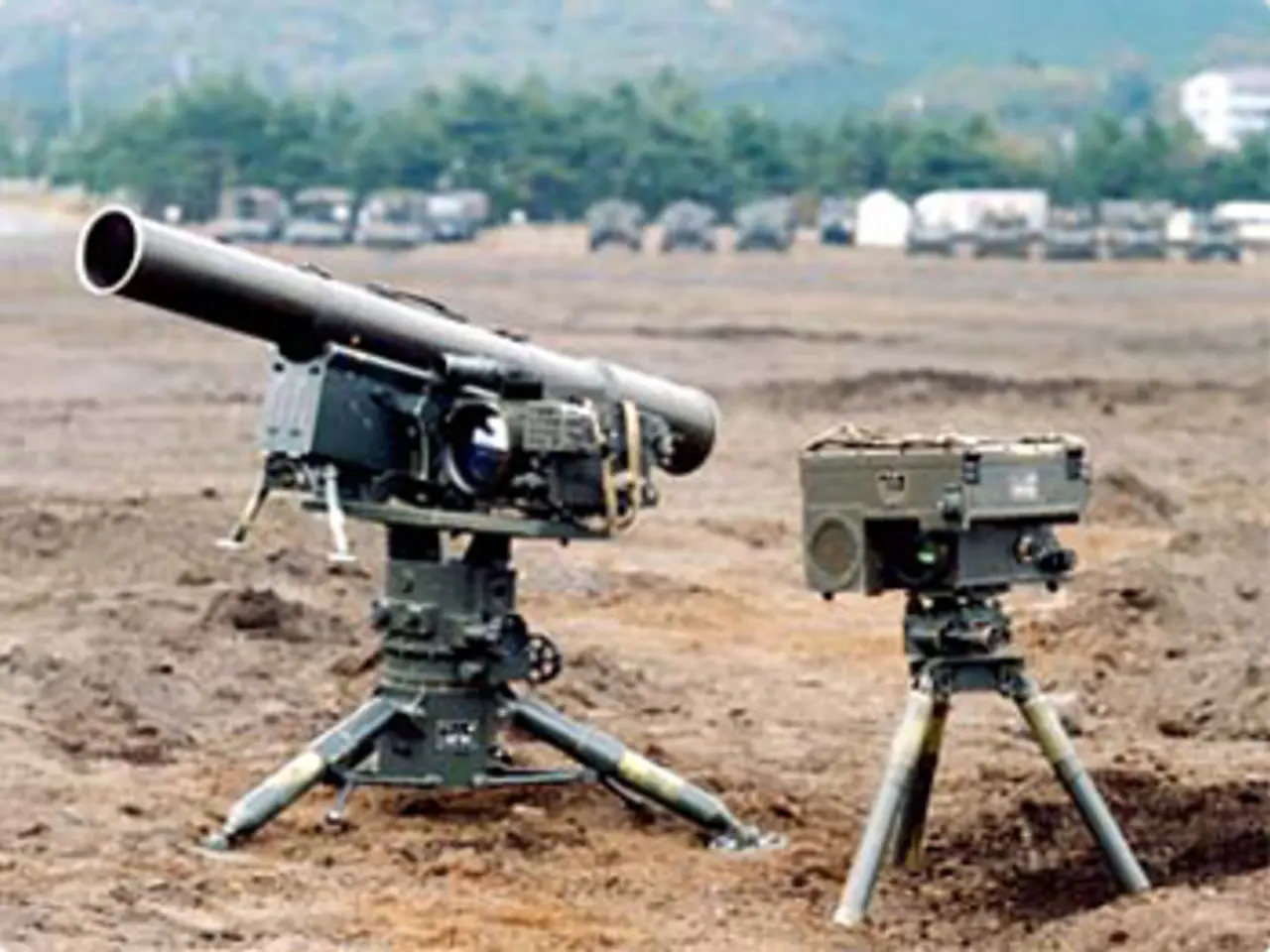Air Defense Operation Explanation: Dispersal Strategy Safeguards Air Force Personnel and Aircraft During Iranian Strike
In the face of escalating threats to air bases, the United States Air Force is considering two strategies to protect its assets and maintain air superiority: Agile Combat Employment (ACE) and hardened shelters for stealth aircraft.
Agile Combat Employment (ACE) involves dispersing aircraft and related assets across multiple, often austere locations instead of concentrating them at a few hardened bases. This dispersal reduces the vulnerability of the fleet to a single strike, making it harder for adversaries to target and destroy large portions of air power at once.
The pros of ACE include operational flexibility and survivability, as it employs manned-unmanned teaming (MUM-T) and rapid deployment to various airfields, enhancing adaptability in contested environments and complicating enemy targeting. ACE also mitigates risks associated with fixed base attacks by enabling use of less conspicuous or less fortified sites.
However, ACE comes with its own set of challenges. Dispersing forces requires more complicated logistics, command and control, and sustainment capabilities across multiple sites, which can strain resources and coordination. Austere or temporary locations may lack robust support systems, affecting aircraft maintenance, supply chains, and readiness. Effective ACE also requires new training, doctrine, and C2 structures to ensure rapid deployment and integration across dispersed units.
On the other hand, hardened shelters provide robust physical protection against direct attacks such as bombs and missiles, shielding highly valuable stealth aircraft from damage. Concentrating aircraft in hardened facilities simplifies logistics, maintenance, and security operations, enabling efficient technical support and rapid sortie generation. Hardened shelters can also be designed to maintain stealth aircraft’s operational readiness and reduce exposure to harsh environmental conditions.
However, hardened shelters create large, known, and fixed targets that adversaries can focus on with long-range precision-guided munitions or saturation attacks. Building and maintaining hardened facilities is costly and less adaptable to rapidly changing threat environments or force deployments. Advances in missile technology and reconnaissance can overcome fixed defenses, reducing the long-term viability of static hardening approaches.
In a recent incident, combat aircraft at Al Udeid Air Base in Qatar were emptied in anticipation of a possible Iranian retaliatory attack. The base, strategically located near Iran, is a potential target. On June 23, a small number of U.S. and Qatari air base defenders repelled an attack, intercepting 13 short- and medium-range ballistic missiles. Iran gave advance warning of the attack.
Timothy Walton, an expert in military affairs, suggests that the Air Force should invest in hardened shelters to protect its stealth fighter and bomber aircraft from aerial attacks. However, Chaudhary emphasizes that survivability of installations extends beyond thicker concrete and requires a range of measures, including passive defenses such as redundant power and fuel sources, cyber hardening, and other measures. Chaudhary also stresses the need for the U.S. military to remain adaptable as threats to air bases evolve.
The threat to U.S. installations extends beyond the Middle East and includes the North American region. A carefully-placed cyber attack can shut down all capabilities and render air bases unable to operate, as Chaudhary warns. The advancement of long-range attack drones has increased the threat to Middle East bases.
In conclusion, ACE offers greater resilience and operational flexibility against modern, sophisticated aerial threats by dispersing forces and leveraging advanced technologies, but at the cost of increased logistical complexity and doctrine changes. Hardened shelters provide strong physical protection and simplify support but risk becoming prime targets in a high-tech, precision-strike environment. The Air Force appears to be moving toward ACE and distributed operations as the more viable long-term strategy for preserving air superiority in contested environments.
- The US Air Force is contemplating two strategies for protecting air bases and preserving air superiority: Agile Combat Employment (ACE) and hardened shelters for stealth aircraft.
- ACE involves dispersing aircraft and related assets across multiple locations, reducing vulnerability to a single strike and complicating enemy targeting.
- Hardened shelters offer robust protection against direct attacks like bombs and missiles, shielding stealth aircraft from damage.
- However, ACE comes with logistical challenges, such as complicated coordination and strained resources, while hardened shelters create large, fixed targets that adversaries can focus on.
- In a recent incident, aircraft at Al Udeid Air Base in Qatar were moved for potential protection against an Iranian attack.
- Timothy Walton, a military affairs expert, suggests investing in hardened shelters for stealth fighter and bomber aircraft, but Chaudhary stresses that protection extends beyond infrastructure and requires passive defenses, cyber hardening, and adaptability as threats evolve.
- The threat to US installations includes the North American region, where a carefully-placed cyber attack can shut down capabilities and render air bases inoperable.
- The advancement of long-range attack drones has increased the threat to Middle East bases in the realm of war-and-conflicts, politics, and general news.




